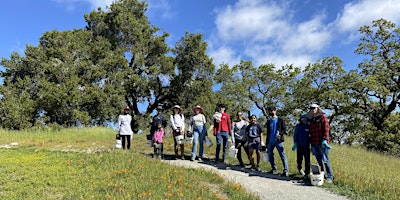On November 6, San Jose’s voters sent a clear message that they want to invest in a safer and more sustainable city by passing Measure T – Public Safety and Infrastructure Bond with over 70% of the vote. The measure allocates up to $650 million for infrastructure improvements throughout San Jose and includes funding for up to $50,000,000 in land conservation acquisitions in Coyote Valley, just south of the city.
This is an exciting step forward for the future of San Jose. Coyote Valley is one of the last remaining undeveloped valley floors in the Bay Area and, if properly conserved, could provide multiple benefits to the region: rare wildlife habitat for hundreds of species, a 1,000+ acre historic wetland complex, a secure source of drinking water, natural flood protection, agricultural lands and many opportunities for recreation.
But the City’s use of Measure T funds to protect Coyote Valley is not guaranteed. In January, San Jose’s City Council will hold a special session to study the rationale for Coyote Valley’s conservation, a necessary step before the City can allocate Measure T funds for land acquisition. So, the fate of Coyote Valley is uncertain.
It’s still possible for the City Council to pursue warehouse development in Coyote Valley, something the General Plan currently calls for. But the special session in January could also mark a turning point in the City’s relationship with the natural environment as it works to protect and rebuild its “green infrastructure,” which will be increasingly important in the face of a rapidly changing climate.
Coyote Valley once contained over 1,000 acres of wetlands, which were drained in the early 1900s to convert the land to agriculture. This hindered the Valley’s ability to store flood waters and protect downstream areas from flooding. These areas include Olinder, Naglee Park and Rock Springs neighborhoods of San Jose that flooded in 2017. By retaining water in Coyote Valley, San Jose can lower its flood risk and, in the process, protect a vital aquifer recharge area that supplies the City with clean drinking water.
The benefits of protecting this landscape go far beyond providing downstream flood control for San Jose. Coyote Valley is a lifeline for the biodiversity of our region as it is a key wildlife linkage between the Santa Cruz Mountains to the west and the Diablo Range to the east. The protection of this land provides opportunities to restore habitats for endangered species, room for sustainable wildlife-friendly agriculture and world-class opportunities for recreation, all within a few miles of downtown San Jose.
At POST, we haven’t wasted any time protecting this last chance landscape and we will continue to work with willing landowners, San Jose City Hall and our partners at the Santa Clara Valley Open Space Authority to acquire and conserve critical lands in Coyote Valley. But the reality is that the future of this landscape still hinges on the decisions of the City’s elected officials. Our hope is that they continue to build on the great momentum provided by voters when they overwhelmingly approved Measure T.
More on Our Website
Event
Volunteer Outside for Earth Day at Pearson-Arastradero Preserve
Pearson-Arastradero Preserve
Posted onAbout Post
Peninsula Open Space Trust (POST) protects open space on the Peninsula and in the South Bay for the benefit of all. Since its founding in 1977, POST has been responsible for saving more than 87,000 acres as permanently protected land in San Mateo, Santa Clara and Santa Cruz counties. Learn more
